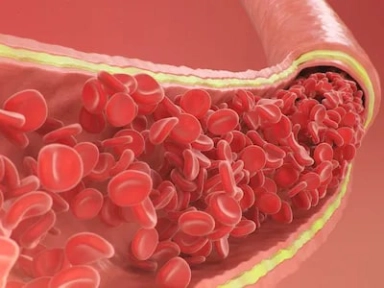{
event: "article_read",
name: `LLTs and Antithrombotic Therapy in PAD`,
author: ``,
tags: `Dyslipidemia | Cardiovascular`,
publication_date: ``,
interaction_type: "content"
}
LLTs and Antithrombotic Therapy in PAD
Lipid-lowering therapy in Peripheral arterial disease: European atherosclerosis society/European society of Vascular medicine joint statement
Existing evidence shows that statin-based treatment substantially reduces the risk of major adverse cardiovascular events (Mace) and major adverse limb events (Male) by about 25% in patients with peripheral arterial disease (Pad) and adding a proprotein convertase subtilisin/kexin type 9 inhibitor (PCSK9i) further decreases this risk.
Key Takeaway
This Joint Task Force from the European Atherosclerosis Society (EAS) and the European Society of Vascular Medicine (ESVM) recommends the following:
- Statins, at the highest tolerated dose, are indicated in patients with PAD for preventing cardiovascular (CV) events
- Low-density lipoprotein cholesterol (LDL-C) should be lowered to <1.4 mmol/L (<55 mg/dL) and by >50% if pre-treatment levels are 1.8–3.5 mmol/L (70–135 mg/dL)
- A combination of statin and ezetimibe may be considered to improve LDL-C goal attainment
- A PCSK9i should be added if LDL-C levels remain 50% higher than the goal, despite statin treatment, with or without ezetimibe
Why This Matters
- Patients with Pad are at a very high risk of CV events; however, risk factor management is usually suboptimal
- This Joint Task Force from the EAS-ESVM provides updated evidence on the management on dyslipidemia and thrombotic factors in patients with PAD.
Key Highlights
2019 European Society of Cardiology/EAS dyslipidemia guidelines for Pad
- Both LDL-C reduction by ≥50% from baseline and an LDL-C goal of <1.4 mmol/L (<55 mg/dL) recommended in Pad patients (≥10% risk of a fatal CV event).
- Maximally tolerated high-intensity statin is recommended to achieve this goal.
- If patients are unable to attain this goal or report statin intolerance, statin (low dose, if statin intolerant) combined with ezetimibe is recommended, along with PCSK9i if further LDL-C lowering is required.
Evidence on statin therapy
- Statins are guideline-recommended first-line lipid-lowering therapy for Pad.
- There is evidence on the positive effects of lipid-lowering on Male and walking performance in patients with Pad.
- In a meta-analysis of 51 studies in 138,060 Pad patients with stable claudication, critical limb ischemia (CLI), or undergoing lower extremity revascularization, 35% received a statin.
- Statin treatment reduced all-cause mortality by 39%, CV death by 41%, CV outcomes by 34%, ischemic stroke by 28%, Male by 30%, and amputations by 35%.
- Another meta-analysis of 19 studies in 26,985 patients with CLI (about half on statins) showed 25% vs 38% reduction in amputation vs fatal events.
- This Joint Task Force conducted a meta-analysis of randomized controlled trials of statin-based treatment showed that:
- Statins reduced Mace by 24% (odds ratio [OR] = 0.76, 95% confidence interval [CI]: 0.69–0.83), CV death by 17% (OR = 0.83, 95% CI: 0.26–2.60), and all-cause mortality by 18% (OR = 0.82, 95% CI: 0.69–0.97)
- Another meta-analysis conducted by the Joint Task Force showed that
- Statins improved walking distance by 45 m (95% CI: -64.7 to 154.7) and pain-free walking distance and duration (by 15.3 m [95% CI: -56.8 to 87.5] and 54.9 s [95% CI: 40.4–69.3], respectively).
Evidence on combination treatment with statin and ezetimibe
- In Improve-it, adding ezetimibe on top of simvastatin significantly reduced CV events in patients with acute coronary syndrome (ACS) (hazard ratio = 0.936; 95% CI: 0.89–0.99; P = 0.016).
- Subgroup analysis in polyvascular disease: Absolute benefit was substantially higher, especially those with concomitant type 2 diabetes (absolute risk reductions 4.2% and 9.1% vs 1.7% in those with ACS alone)
Evidence on combination treatment with statin and a PCSK9i
- The Fourier trial assessed the addition of evolocumab to intense statin therapy (with or without ezetimibe) in patients (N = 27,564) with coronary, cerebrovascular, or peripheral arterial atherosclerosis.
- In a prespecified analysis, the composite of CV death, myocardial infarction, stroke, hospitalization for unstable angina, or coronary revascularization was reduced by 21% and Male risk by 42%.
- In a subsequent analysis of the Odyssey outcomes study, patients with recent ACS were randomized to alirocumab on top of maximally tolerated statin or statin alone.
- In patients who also had Pad (3.2%), a 7% reduction was noted in relative risk for the primary endpoint (composite of coronary heart disease death, nonfatal myocardial infarction, fatal or nonfatal ischemic stroke, or unstable angina requiring hospitalization).
- In a subsequent analysis including all patients with a history of Pad, the risk for Pad events was significantly reduced by 41%, corresponding to an 8.6% absolute reduction in risk at 3 years.
- Finally, a combined analysis of both Fourier and Odyssey outcomes studies conducted by this Joint Task Force showed the following:
- PCSK9i on top of maximally tolerated statin significantly reduced (24%) CV events (OR = 0.76, 95% CI: 0.64–0.91), albeit without significant difference in all-cause mortality (OR = 0.85, 95% CI: 0.67–1.09)
- Belch JJF, Brodmann M, Baumgartner I, Binder CJ, Casula M, Heiss C, et al. Lipid-lowering and anti-thrombotic therapy in patients with peripheral arterial disease: European Atherosclerosis Society/European Society of Vascular Medicine Joint Statement. Atherosclerosis. 2021;338:55–63. doi: 10.1016/j.atherosclerosis.2021.09.022. PMID: 34763902.
Related articles
MAT-KW-2200316/V1/NOV2022


.webp/jcr:content/Lipid-lowering-therapy-thumb%20(2).webp)

.webp/jcr:content/Evaluation-of-lipid-management-following-ACS-thumb%20(1).webp)